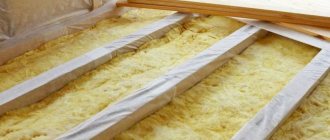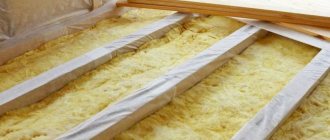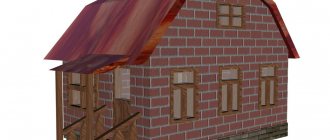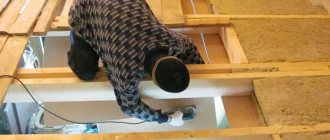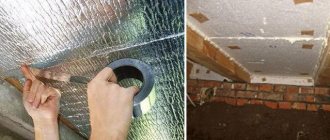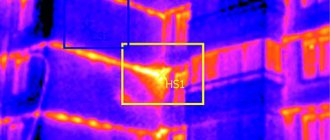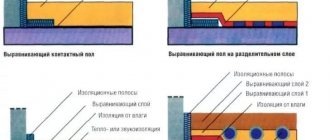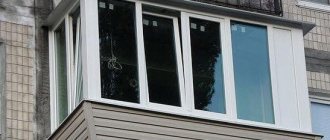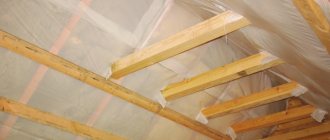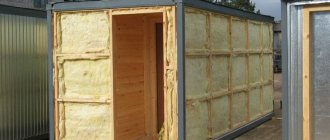Insulation of the boiler room - we reduce heat loss at home and heating costs
Details Created 02/06/2015 05:28
The premises in which the boiler room will be located are subject to fairly stringent requirements. This is explained by the fact that boilers operating on gas, solid or liquid fuels are classified as hazardous objects. The use of open fire requires increased requirements for fire safety of the premises. And gas is classified as an explosive substance, which also affects the conditions for arranging a boiler room.
All these circumstances are connected, including the way in which the boiler room can and should be insulated, as well as the choice of thermal insulation materials. Thermal insulation will help reduce heat loss. The boiler’s task is to heat the coolant for heating the house, and not the space surrounding the boiler room. Thus, fuel consumption and, accordingly, the cost of heating the house are reduced.
Please note: during insulation work, it is possible to use welding tools and equipment. On the website https://svarprom-nn.ru you will find products from leading manufacturers at the best prices.
The insulation of a boiler room building is, in principle, no different from the insulation of a garage and consists of several successive stages. To achieve maximum effect, it is recommended to insulate all main surfaces of the building: walls and roof.
External insulation of boiler room walls
It is recommended to insulate a boiler room in a private house from the outside. This is explained by the fact that there is no reduction in internal space, the formation of condensation is eliminated, and the choice of thermal insulation materials is significantly expanded. When thermally insulating a boiler room from the inside, it is not recommended to use flammable and flammable insulation materials. These include polystyrene foam, polystyrene foam, and polyurethane foam. They can only be used for external insulation. If they are used for internal thermal insulation, then high-quality finishing of the room is necessary, eliminating the possibility of fire of the insulation. External insulation is usually done during the construction of a building, but it can also be done with existing buildings.
Insulation of the boiler room from the outside includes the following steps:
- Cleaning and repairing a brick or concrete wall. Large cracks and chips need to be plastered and the wall surface leveled;
- Pasting walls with thermal insulation materials. Most often, foam is used for this. It has good thermal insulation properties, is waterproof, lightweight and easy to install. Special glue is applied to foam sheets either spotwise or in a thin layer over the entire surface. During the insulation process, the foam is pressed tightly against the wall. Installation starts from bottom to top. The joints are sealed using polyurethane foam;
- Reinforcement of the insulation surface. The foam is covered with a layer of glue, into which a plastic mesh is embedded;
- Finishing. After complete drying, the surface is plastered. Decorative or simple plaster is used. In the latter case, subsequent painting of the walls or installation of finishing materials is carried out.
Why do you need to insulate chimneys?
Before looking for an answer to this question, we need to consider the physics of the process of recycling furnace gases.
They contain a wide variety of substances oxidized during the combustion process, such as:
- Vapors of acids - sulfuric, carbonic, nitric.
- Carbon monoxide or carbon dioxide is an extremely dangerous substance to human life.
- Solid products in a finely dispersed state.
- Water vapor evaporated during the combustion process, reducing the temperature in the firebox and chimney.
When igniting a cold fireplace, conditions are created for the formation of condensation. This occurs when the chimney reaches a temperature at which condensation begins to form - the dew point. Initially, such a temperature zone is always located inside the pipe and condensate settles on its walls. The condensate contains all the substances listed above, so it is chemically active. As it warms up, the dew point shifts upward and at some point goes beyond the chimney, and the formation of condensation in it stops.
This is especially true for massive brick chimneys and quickly cooling thin-walled metal ones. Condensation occurs in any chimney duct. What matters is how long the unfavorable conditions persist. In an insulated chimney it is much less.
Low-temperature heating units - geysers and slow-burning pyrolysis furnaces with a furnace gas temperature of about 300 degrees almost constantly form condensation in uninsulated chimneys.
The insulated pipe lasts a long time, increasing the safety of heating operation
The influence of condensate on the combustion process
Condensation has different negative effects on the condition of the chimney walls depending on the material:
- In brick pipes, it is absorbed into the body of the material until it reaches the outer surface of the pipes or walls. In cold weather, the condensate moisture freezes, tearing the masonry.
- In ferrous metal pipes, chemically active condensate quickly corrodes the inner surface, forming cavities and through holes.
- Stainless steel chimneys are more stable, which is facilitated by the chemical inertness of the material and the high quality of the surface. As condensate forms, it flows down to the storage tank or directly into the firebox with a direct chimney.
- Condensation contributes to the settling of solid particles from the flue gases on the walls of the chimney, resulting in the formation of a solid sediment, which gradually narrows the cross-section of the pipe and worsens draft until it stops completely.
- The most dangerous event is a pipe fire, which can cause the temperature to rise to 700–1000 degrees. Under such circumstances, a fire with complete loss of real estate is almost inevitable.
Obviously, insulating chimneys in a country house is a vital measure.
Stainless steel pipes are less susceptible to condensation
Boiler room roof insulation
When constructing outbuildings such as a boiler room, in most cases a flat roof is installed. This is a more economical and simpler option. But in any case, roof insulation is required. In most cases, the floor for a flat roof is a concrete slab. Insulation of a flat roof is carried out from the outside:
- A waterproofing layer is installed. You can use bitumen mastics or rolled materials, for example, roofing felt.
- A layer of insulation is laid. It is recommended to use rigid types of thermal insulation materials, such as polystyrene foam, polystyrene foam, polyurethane foam. The insulation sheets are attached using special glue. The seams are taped. For reliability, you can additionally secure the insulation using special plastic dowels.
- A cement screed is created. A 15-20mm layer of cement mortar is poured over the insulation, leveled and left to dry for several days.
- The outer covering is installed. You can use roofing felt, mastic, bitumen. They will serve as additional waterproofing for the roof. You can use modern built-up materials based on bitumen. They come in rolls and are quite easy to install.
Material selection
Most often, various rolled wool acts as insulation material. The two most famous varieties are:
- mineral wool. Yellowish material. It performs well as insulation because it has low thermal conductivity. At the same time, it is inexpensive, easy to install and does not raise any special questions at all. The only negative is that mineral wool is very sensitive to moisture. If water gets in, the material, firstly, will instantly lose about 90% of its insulating properties, and secondly, it will not dry out. That is, if the mineral wool gets wet, you will have to remove it and do all the work again. There is only one way out of this situation - to foresee the possibility of getting wet in advance and eliminate it;
- glass wool This material was once very popular, which is not surprising. In terms of its thermal insulation properties, glass wool is no worse than mineral wool, but at the same time it lasts much longer and is absolutely indifferent to moisture. When exposed to water, the material dries quickly, does not rot, does not mold - in general, it is resistant to many types of influences. But there are some downsides here too. Glass wool begins to crumble after a dozen or two years. This releases glass dust into the air, which can be inhaled by people living in the house. Naturally, this will not bring any health benefits. Therefore, glass wool is, as a rule, not used for residential premises. An exception may be the case when the boiler room is located in a separate building that is not in contact with residential buildings. But even then, it is advisable to limit the glass wool to a high-quality layer of paint or another finishing option through which glass dust will not penetrate. When carrying out work, do not forget that you can work with this insulation only in protective equipment: gloves, overalls and goggles.
Dear friends, the question of whether it is necessary to insulate the boiler at all is not even worth it - of course, this is not a mandatory action, but for those who do not want to incur extra costs for paying for heating resources, it is simply necessary. You can do all the work yourself; it won’t take a lot of time or money. So go for it. Good luck!
Insulation of boiler room chimney
One of the main conditions for high-quality and safe operation of a boiler room is the presence of ventilation and a chimney to remove fuel combustion products. The efficiency of the heating boiler largely depends on the efficiency of the chimney.
Insulation of the boiler room chimney is necessary to maintain good draft. As smoke passes through the pipe, its walls heat up and the smoke cools. The draft decreases and the smoke moves more slowly, which can lead to the accumulation of carbon monoxide in the boiler room. Another problem with uninsulated pipes is the occurrence of condensation on the inner surface. This leads to destruction and the need for more frequent cleaning of the chimney.
Asbestos or metal pipes are insulated using non-combustible materials: mineral wool, glass wool, fibrous or fill insulation. These include eclovate, vermiculite, expanded clay, and perlite. The pipe is wrapped in insulation and protected from getting wet and exposed to external factors with a metal casing. You can install a larger diameter pipe on top of the chimney and fill the gap with thermal insulation material. The insulation is filled with cement mortar on top to protect it from getting wet.
Is it necessary to insulate the chimney pipe?
An important task is the insulation of the exhaust pipe directly connected to the boiler - the chimney
It is necessary to insulate the chimney for the following reasons:
- The higher the temperature in the outlet pipe, the greater the draft and speed of air movement in it, the less the danger of combustion products entering the room.
- If the walls of the chimney are cold, condensation increases when combustion products combine with air, resulting in rust and reducing the service life of the chimney.
- In ceramic and asbestos pipes, the presence of condensation in combination with sudden cooling leads to freezing and destruction of the chimney walls.
Video - Boiler room of a private house
Recommended viewing:
- Insulating a house with mineral wool is a solution to the issue of protection from winter cold - 02/16/2015 05:30
- Technology for insulating a well for the winter to preserve it - 02/13/2015 05:27
- Attic gable - design features of creating an under-roof space - 02/12/2015 05:21
Related topics:
- Laying utility networks and communications - ensuring the life of the house - 03/02/2015 10:12
- Soundproofing a wooden house - creating favorable acoustic conditions - 02/02/2015 05:26
- Types and methods of insulating external water supply - 01/12/2015 18:24
